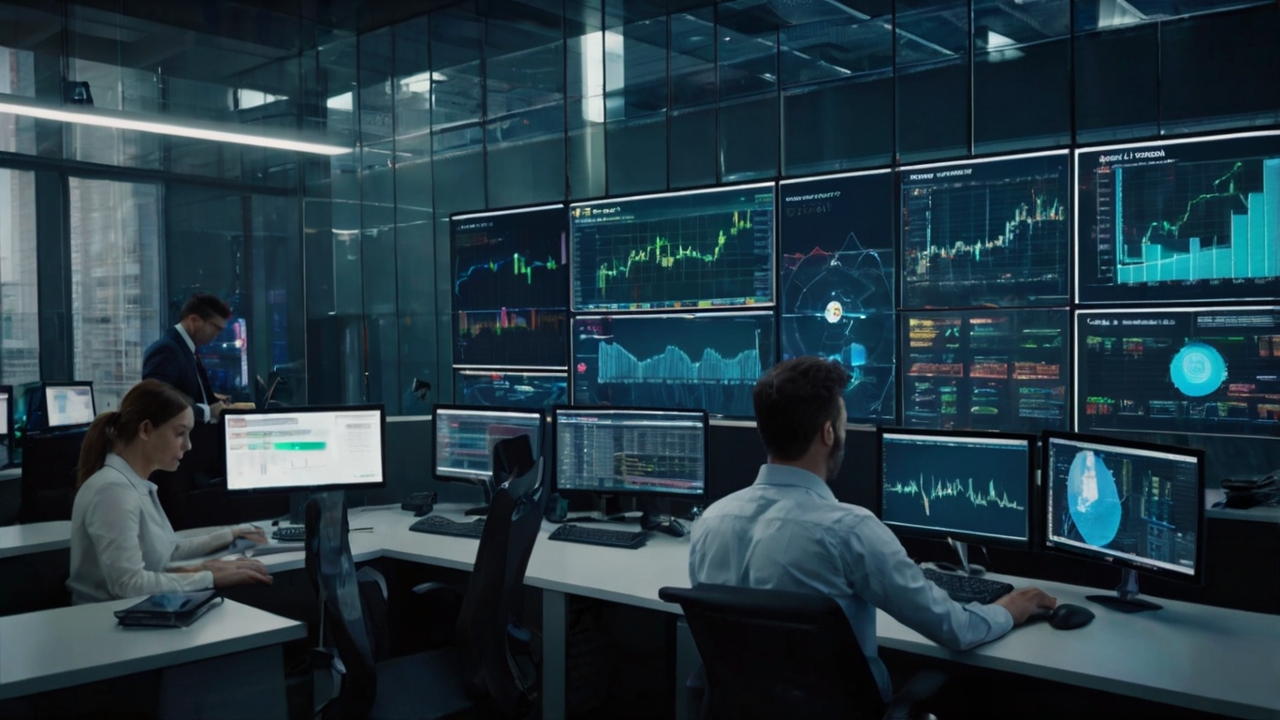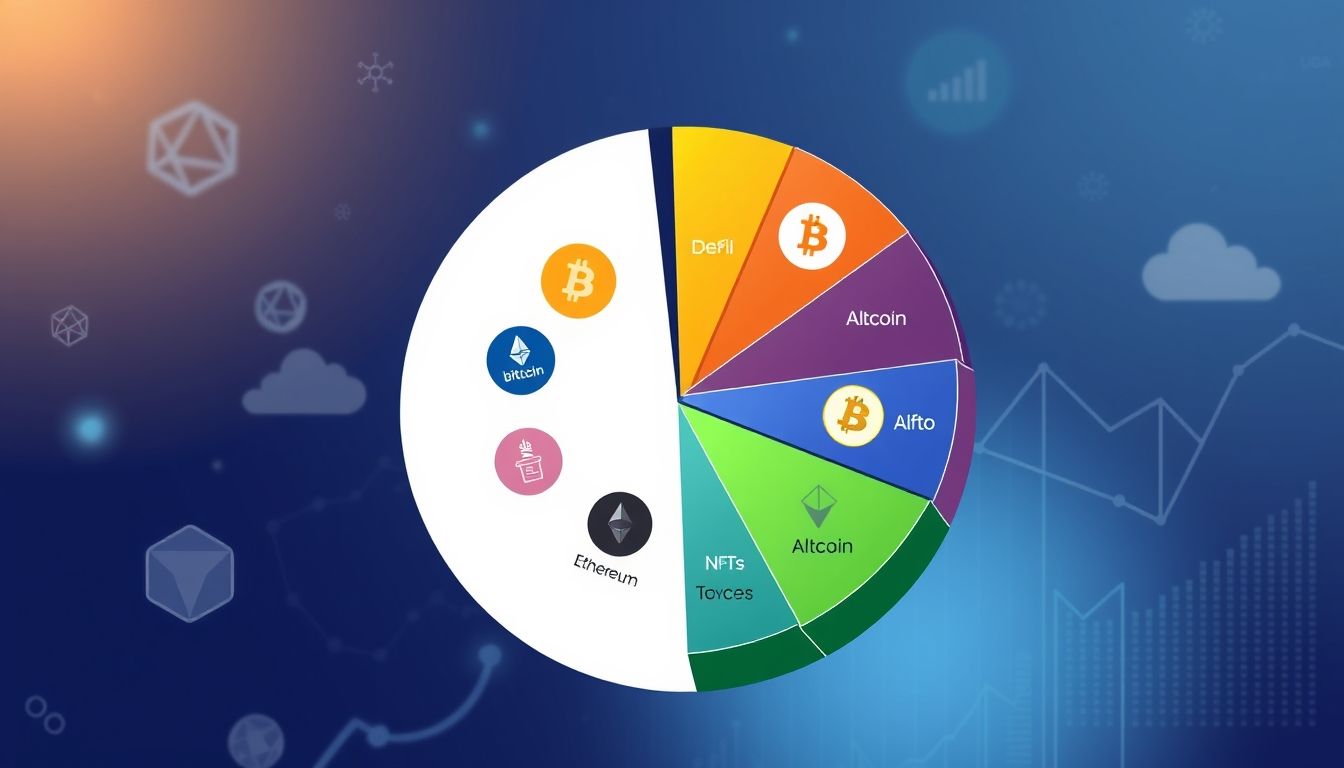Introduction to Technical Analysis of Cryptocurrencies
In the exciting and ever-changing world of cryptocurrencies, technical analysis is an essential tool for investors and traders alike. It allows them to understand market behavior, predict future price movements, and make informed investment decisions. Technical analysis focuses on studying historical price charts and trading volume, aiming to identify patterns and trends that can help forecast future price movements. Unlike fundamental analysis, which focuses on economic and financial factors, technical analysis relies heavily on quantitative data and charts.
Chapter 1: Basics of Reading Cryptocurrency Charts
Common Chart Types
There are several types of charts used in technical analysis, but the most common are:
- Line Charts: Display the closing price for each time period, providing a simple and easy view of the overall price trend.
- Bar Charts: Display the opening, closing, highest, and lowest price for each time period.
- Candlestick Charts: Similar to bar charts, but they display more detailed information. The body of the candlestick represents the difference between the opening and closing price, while the wicks represent the highest and lowest price. Green or white candles indicate a price increase, while red or black candles indicate a price decrease.
Understanding Timeframes
The timeframe determines the duration represented by each candle or bar on the chart. The timeframe can be 1 minute, 5 minutes, 1 hour, 1 day, 1 week, or 1 month. Choosing the appropriate timeframe depends on your trading style. Day traders prefer short timeframes (such as 5 minutes or 15 minutes), while long-term investors prefer longer timeframes (such as daily or weekly).
Trading Volume
Trading volume represents the number of cryptocurrencies traded during a specific time period. Trading volume is an important indicator of the strength of a trend. A strong trend is usually accompanied by high trading volume, while a weak trend is accompanied by low trading volume.
Chapter 2: Identifying Trends
Uptrend
An uptrend occurs when successive peaks and troughs are higher than the previous peaks and troughs. An uptrend indicates that buyers are in control of the market, and prices are likely to continue rising.
Downtrend
A downtrend occurs when successive peaks and troughs are lower than the previous peaks and troughs. A downtrend indicates that sellers are in control of the market, and prices are likely to continue falling.
Sideways Trend
A sideways trend occurs when prices move in a narrow range, without a clear direction. A sideways trend indicates that the market is in a state of equilibrium between buyers and sellers.
Chapter 3: Trendlines
Trendlines are straight lines drawn on the chart to connect successive peaks or troughs. Trendlines help identify the overall price trend and identify potential support and resistance levels.
- Uptrend Line: Drawn below successive troughs.
- Downtrend Line: Drawn above successive peaks.
Breaking a trendline can indicate a potential reversal in the trend.
Chapter 4: Support and Resistance Levels
Support and resistance levels are price levels that tend to stop or reverse price movement. A support level is a price level where buyers tend to step in to prevent the price from falling further. A resistance level is a price level where sellers tend to step in to prevent the price from rising further.
Support and resistance levels can be horizontal or sloped (such as trendlines). Breaking a support level can lead to a price decrease, while breaking a resistance level can lead to a price increase.
Chapter 5: Technical Indicators
Technical indicators are mathematical calculations based on price and volume data. Technical indicators are used to identify trends, identify support and resistance levels, and generate buy and sell signals.
Moving Averages (MA)
Moving averages are trend-following indicators that calculate the average price of an asset over a specified time period. There are different types of moving averages, such as the Simple Moving Average (SMA) and the Exponential Moving Average (EMA). Traders use moving averages to identify the overall price trend and identify potential support and resistance levels.
Relative Strength Index (RSI)
The Relative Strength Index is an oscillator that measures the strength of price movement. The RSI ranges from 0 to 100. An asset is considered overbought when the RSI is above 70, and an asset is considered oversold when the RSI is below 30. Traders use the RSI to identify potential buying and selling opportunities.
Moving Average Convergence Divergence (MACD)
The MACD is a trend-following indicator that measures the relationship between two moving averages. The MACD consists of the MACD line, the signal line, and the histogram. Traders use the MACD to identify trends and identify potential buying and selling opportunities.
Chapter 6: Chart Patterns
Chart patterns are specific shapes that appear on the chart and reflect market behavior. Chart patterns can be continuation patterns (indicating that the current trend will continue) or reversal patterns (indicating that the current trend will reverse).
Head and Shoulders Pattern
The Head and Shoulders pattern is a reversal pattern that indicates a potential reversal in an uptrend. The Head and Shoulders pattern consists of three peaks, where the middle peak (the head) is higher than the other two peaks (the shoulders).
Double Top and Double Bottom Patterns
The Double Top pattern is a reversal pattern that indicates a potential reversal in an uptrend. The Double Top pattern consists of two successive peaks at approximately the same level. The Double Bottom pattern is a reversal pattern that indicates a potential reversal in a downtrend. The Double Bottom pattern consists of two successive troughs at approximately the same level.
Chapter 7: Trading Strategies Using Technical Analysis
Technical analysis can be used to develop various trading strategies. Here are some examples:
- Trend Trading: Buy cryptocurrencies when the price is in an uptrend, and sell cryptocurrencies when the price is in a downtrend.
- Breakout Trading: Buy cryptocurrencies when the price breaks through a resistance level, and sell cryptocurrencies when the price breaks through a support level.
- Bounce Trading: Buy cryptocurrencies when the price bounces off a support level, and sell cryptocurrencies when the price bounces off a resistance level.
Chapter 8: Risk Management
Risk management is an essential part of successful trading. Before you start trading, you should determine the amount of risk you can tolerate and develop a risk management plan. Some tips for risk management:
- Use Stop-Loss Orders: A stop-loss order is an order placed with your broker to automatically sell the cryptocurrency if the price falls to a certain level. A stop-loss order helps limit your potential losses.
- Don't Invest More Than You Can Afford to Lose: Don't invest money you need to cover your basic expenses.
- Diversify Your Investment Portfolio: Don't put all your money into one cryptocurrency. Diversify your investment portfolio by investing in a variety of cryptocurrencies and other assets.
Chapter 9: Practical Examples from the Arab and Global Markets
Let's look at some practical examples of how to apply technical analysis to cryptocurrencies in the Arab and global markets:
Example 1: Bitcoin (BTC) Analysis
In early 2023, Bitcoin's price experienced a strong uptrend. Using trendlines and moving averages, traders were able to identify potential support and resistance levels and make informed buying decisions. For example, when Bitcoin's price broke through the resistance level at $25,000, it was a strong buy signal.
Example 2: Ethereum (ETH) Analysis
In mid-2023, Ethereum's price formed a Head and Shoulders pattern, indicating a potential reversal in the uptrend. Traders who noticed this pattern were able to sell Ethereum before the price declined.
Example 3: Emerging Arab Cryptocurrency
Let's take the example of an emerging Arab cryptocurrency called "Amal Coin". If "Amal Coin" shows an uptrend supported by high trading volume, it could be a good investment opportunity. However, it is important to conduct thorough research before investing in any emerging cryptocurrency.
Chapter 10: Advanced Tips and Additional Resources
Here are some advanced tips and additional resources to help you master technical analysis of cryptocurrencies:
- Use Technical Analysis Tools and Software: There are many tools and software available that can help you analyze charts and identify patterns. Some popular tools include TradingView and MetaTrader.
- Stay Up-to-Date with Market News: News and economic events can affect cryptocurrency prices. Stay up-to-date with market news by reading news articles, following social media, and attending conferences and seminars.
- Practice on a Demo Account: Before you start trading with real money, practice on a demo account. A demo account allows you to trade with virtual money without risking your real money.
- Learn from Experts: There are many experts in the field of technical analysis of cryptocurrencies. Learn from the experts by reading their books and articles, attending their training courses, and following them on social media.
Disclaimer: Trading in cryptocurrencies involves high risks. You should consult a financial advisor before making any investment decisions.




